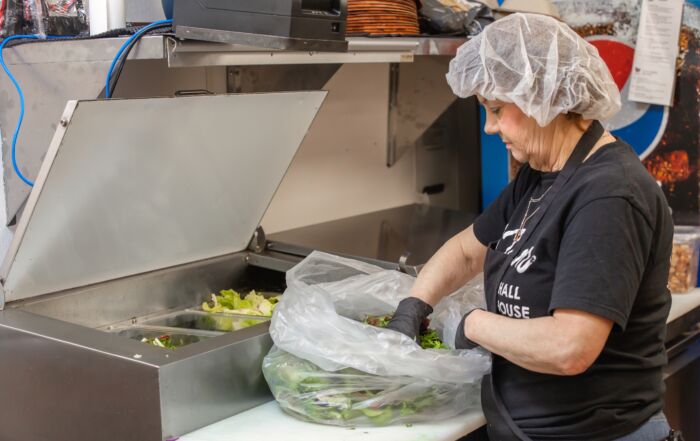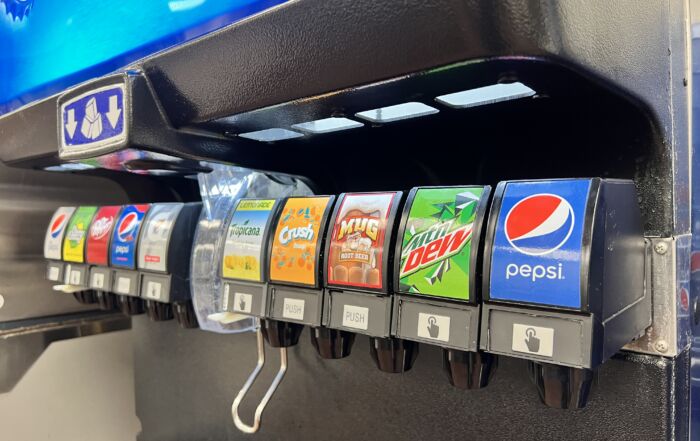The Eleven Commandments of Food Safety at Your Restaurant
 Lists help us remember all kinds of information. Given the list of recent national foodborne outbreaks in the news, keep repeating this list to your food service team. They are kind of like “commandments”. As a professional in a food service facility we should think of the very basic food safety concepts that every crew member should aspire to learn, even though this list may have different priorities based on your menu. The first 3 apply to anyone who serves food, from a bag of popcorn to a full course meal. As chefs or managers, if we can “set the example” by repeating good food safety practices visibly to the crew, it will help them understand how important it is to the success of your facility. Thou shalt:
Lists help us remember all kinds of information. Given the list of recent national foodborne outbreaks in the news, keep repeating this list to your food service team. They are kind of like “commandments”. As a professional in a food service facility we should think of the very basic food safety concepts that every crew member should aspire to learn, even though this list may have different priorities based on your menu. The first 3 apply to anyone who serves food, from a bag of popcorn to a full course meal. As chefs or managers, if we can “set the example” by repeating good food safety practices visibly to the crew, it will help them understand how important it is to the success of your facility. Thou shalt:
1.) Train every employee about correct handwashing, monitor it, document the process & use positive reinforcement. Use a 20 second handwash, cleaning the fingertips with a soft nailbrush. Know how, when, and why it’s important. Handwashing is the number one practice YOU CAN DO to prevent a foodborne illness!
2.) Be a safe food handler. Restrict or send home crew members that are ill, so they do not handle foods. Require strict personal hygiene from all employees. Wear clean uniforms and hair restraints. Never wear jewelry or artificial nails at work.
3.) Enforce “no bare hand contact with ready-to-eat foods” and train your staff exactly what that is. Wash hands and use alternatives such as disposable gloves, clean utensils or paper wraps to handle all ready-to-eat foods.
4.) Identify all potentially hazardous foods on your menu and keep them as cold as possible during storage and preparation.
35 to 38°F internal food temperature is best — no higher than 41° F maximum.
Keep FROZEN FOOD AT 0°F. Thaw foods safely a day in advance under refrigeration.
5.) Obtain food supplies from reputable approved sources. Inspect foods for spoilage and check temperatures when receiving from the supplier, during cold storage, and on the prep tables. When in doubt, throw it out!
6.) Observe time & temperature guidelines to prevent cross-contamination in storing and handling food prepared in advance of service. Label foods prepared with product, date, time, and temperature.
7.) Teach all crew members to use temperature charts and a stem thermometer. Remember to keep foods out of the DANGER ZONE 41° to 135° F. Use the four hour limit. Keep hot foods hot and cold foods cold!
Check food temperature in 2 places — the thickest portion & the center.
Sanitize the thermometer stem before & after use with an alcohol swab.
8.) Avoid cross-contamination of raw and ready-to-eat foods by hands, utensils and equipment. Keep raw products separate from ready-to-eat foods. Wash, rinse and sanitize food contact equipment.
9.) Cook and heat-process food to above recommended minimum temperature (usually 145°F, 155°F or 165°F based on the kind of food). Post a chart for the crew. Memorize your minimum cooking temperatures for the common raw foods you cook in your facility.
10.) Rapidly chill hot food to below 41°F within 4-6 hours! Use ice bath, shallow pans, stirring, cut or reduce into smaller portions, and uncover while in the cooling process (check local regulations).
11.) Reheat food quickly to 165° F + (hold for 15 seconds) within 2 hours. Hot hold foods at 135°F or above.
Bottom Line: Repeat, repeat, and repeat the list to the new staff members and the veterans!
***
About the Author: Lacie Thrall

This information is provided as a general guideline and is not intended to be, nor does it, constitute legal or regulatory advice. Additional Federal regulations may apply to your particular circumstances. State, regional and local laws, ordinances and regulations may also apply.
Safely Shopping at Farmers’ Markets: A Food Safety Guide for Foodservice Operators and Chefs
Farmers’ markets are an appealing source of fresh, local, and seasonal ingredients for individuals and [...]
Ice Machines, Beverage Dispensers & Other Overlooked Food Safety Hazards
At the end of the spring semester in our campus food production lab, we’re fortunate [...]
What Foodservice Professionals Need to Know about the FDA Milk Testing Changes
In late-April and early-May 2025, headlines across the country and several social media posts stirred [...]
Before They Arrive: Your Health Inspection Prep List
A few weeks ago, I welcomed our local health inspector into a class I was [...]










